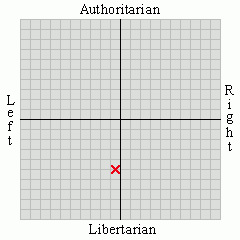Humble beginnings, but over the next few decades this youngster would give us marvelous inventions such as the induction motor, a variety of new types of generators and transformers, the fluorescent light, improved steam turbine, and alternating electrical current. He would lay the foundations for our ability to transmit electricity over long distances, and he very nearly gave us the ability to transmit electricity without the need for wiring.
This was one bright lad, and with reference letters from Charles Batchelor, Nikola Tesla gained employment in the New Jersey laboratories of Thomas Edison, but that didn’t last long. The two great inventors, it seems, had conflicting styles. Or perhaps Edison was unwilling to share the spotlight with this 28-year-old kid and his alternating current, correctly seeing this as a threat to his investment in direct current power generation.
So Tesla departed Continental Edison Companies in 1885 and sold the patent rights to his alternating current systems to George Westinghouse, founder of the Westinghouse Electric Company. Tesla had demonstrated the advantages of alternating current over Edison's system of direct current when Westinghouse used Tesla's system to light the 1893 World Columbian Exposition in Chicago. Due to this success, Tesla fulfilled a childhood dream by winning the contract to install the world’s first hydroelectric power plant at Niagara Falls.
Tesla continued to dream of providing electrical energy wirelessly over large areas, and it is to this dream we can attribute his greatest invention. The Tesla coil remains widely used today in radio and television sets and other electronic equipment, and in 1898 it was this invention, utilized in a Colorado Springs demonstration that created spectacular 30-foot lightning bolts and lighted, without the benefit of wires, 200 bulbs spread over 25 miles.
Tesla next met financier J.P. Morgan, and with a $150,000 loan began construction of a wireless broadcasting tower on Long Island. The loan, secured with 51 percent of Tesla’s patent rights, was a worthwhile investment as Tesla expected the tower to be the start of a communications system, transmitting pictures, messages, weather warnings, and stock reports worldwide. The project was abandoned because of Morgan's withdrawal of support in 1905. Morgan wanted to meter the power output for profit, while Tesla wished it to remain free.
Over the decades more than 700 patents were issued, and the world benefitted greatly from the genius that was Nikola Tesla; the fluorescent light, lasers, wireless communication technology, remote electrical control, robotics, improved turbine engines and even vertical take off aircraft have direct roots in Tesla patents. He even invented the flashbulb for photography, if you’re old enough to remember those.
Although the accolades and even a Nobel Prize went to Marconi, Tesla is the father of radio. His published schematics appeared in 1896, several years before Marconi introduced his transmitter to the world.
Tesla gave us our modern electrical transmissions systems, and his dreams, depicted in crude drawings, included energy from the sun and the sea. He predicted interplanetary communications, satellites and space travel long before the science fiction writers scribed their amazing stories.
But the dream of abundant, free energy transmitted around the world sans wiring died with Tesla. Tesla’s tower was demolished in 1917 for wartime security reasons. The tower site remains, and the 100 foot deep foundation is still intact. Tesla's laboratory is maintained in good condition, and now sports a bicentennial plaque. Young engineers still pour over Tesla’s papers seeking unexploited ideas.
Matthew Behrend, Vice President of the Institute of Electrical Engineers (now the Institute of Electrical and Electronic Engineers), in a 1915 speech while presenting Tesla with the Edison medal, announced, "Were we to seize and eliminate from our industrial world the result of Mr. Tesla's work, the wheels of industry would cease to turn, our electric cars and trains would stop, our towns would be dark and our mills would be idle and dead. His name marks an epoch in the advance of electrical science."

In 1931, on Tesla’s 75th birthday, the inventor appeared on the cover of Time Magazine. He received congratulatory letters from more than 70 pioneers in science and engineering, including Albert Einstein, and upon his death was eulogized by the likes of Eleanor Roosevelt, Mark Twain and Ayn Rand.
As we approach this coming Thursday, the 67th anniversary of Tesla’s January 7,1943 death, please take a look around you and rediscover the genius of this man. How much of your lifestyle do you owe to this poor, Serbian immigrant? Is your home heated by electricity? Do you enjoy your television and radio?
If you appreciate these comforts of your life, pause a moment to be thankful for giants who came before
CITATIONS:
[1] Rajvanshi, A., 2007. Nikola Tesla — The creator of the electric age. J. Resonance Volume 12, Number 3 / March, 2007.
[2] Seifer, M., 2001. Wizard: The Life and Times of Nikola Tesla : Biography of a Genius (Citadel Press)
[3] The Tesla Memorial Society of New York.
~~








1 Comments:
A forgotten genius. I've never understood why he has so little mention in our history.
Good post! As usual.
Happy new year.
Post a Comment